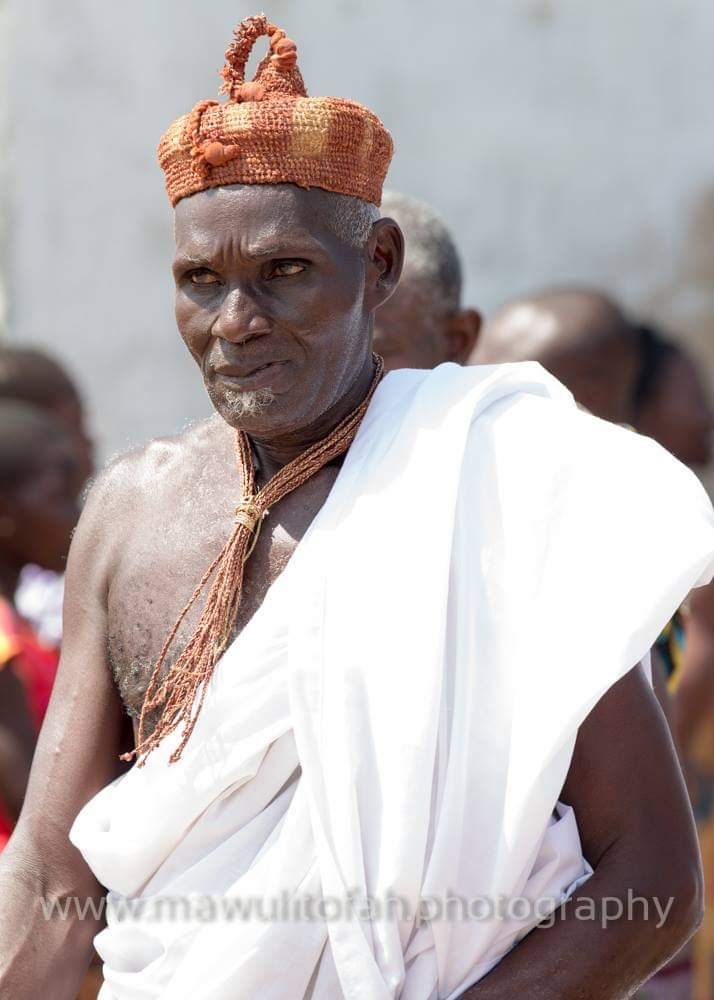
From about 1650 to 1710, the Kingdom of Akwamu, not daring to messs with the powerful Kingdoms of Asante and Denkyira to the north,
decided to expand south through conquest.
In 1677, their King Ansa Sasraku II, aided by the Agonas and Gomoas invaded Accra and captured
King Okai Koi and his eldest son.
His younger son, Ofori escaped and sought the protection of the Danes at Christianborg Castle. With the help of the Danes, King Ofori was
able to keep King Ansa Sasraku and his army at bay for two years.
In1679 however, the Danes withdrew and handed over the castle to the Portuguese, who pledged to remain neutral. King Sasraku saw his chance
and attacked King Ofori’s state, then known as Ladoku. Ladoku was defeated and brought under Akwamu’s jurisdiction. Some of the inhabitants of Ladoku fled the attack, crossed the Volta River and settled amongst the Anlos and Krepis. These people were from the present traditional areas of Ada, Kpone, Ningo, Prampram (then called
Gbugbla), Osudoku and Shai.

Some of the Ladoku refugees settled at Anloga, the traditional capital of the Anlos. One refugee, Tay Tsrui came from Prampram. His son, Aduadui, founded the Dzevi Clan of Anlo – to which I belong. The Dzevi clan is a branch of the Adangmebiawe clan of Ada. “Dze” in Ewe,
the language of the Anlo people means salt; and “Viawo” means people. So I used to think that Dzeviawo – the clan name- meant Salt-People.
Research shows that I was mistaken. “Dze” is rather an Adangbe word meaning “left” or “breakaway.” So Dzeviawo means the people who left or broke away (from Ladoku) to settle in Anlo. In order to distinguish themselves from the Anlo people, they decided to name their children
(i.e. children born to the Dzevi clan) in the same manner as the general Adangbe people – hence my name TETTEY, which is the name given
to a first born male of the Dzevi clan.
The Ladoku people of Prampram call themselves the Larkpleh people. Note the similarity to my hometown Alakple. The Prampram people did
not come to Anlo empty-handed. They brought their god, Nyigbla, who’s shrine is now at Alakple and is the war god of the Anlos. The elders
of Anlo, did not initially care for Nyigbla and its followers and considered the god a foreign god and its followers a nuisance. The general population however, was in awe of Nyigbla and its adherents.
Things came to a head in 1769, when the political and religious leaders of Anlo felt that the Nyigbla followers were becoming too popular and were undermining their authority. As happened in Chinua Achebe’s novel “Things Fall Apart” when the Ndichie or Elders of Mbanta gave the Christians “The Evil Forest” to prove their spiritual
powers, the Anlo leaders forced the Nyigbla followers to build their shrine in a forest grove called Gbakute (later called Nyikove or Nyiko
forest).
The grove was traditionally used by the Anlos to execute criminals and it was believed that the place was haunted by the ghosts of the
executed and by evil spirits which the Nyigbla adherents could not overcome. The Nyigbla followers however, thrived and the grove then
became known as Nigblave or Nyigbla Forest.
Unable to force the Nyigbla god and its adherents out of Anlo, and noting the popularity of the god amongst the people, the Anlo leaders
made a U-turn and accepted the Nyigbla Priest as a member of the Anlo governing council. Nyigbla then became recognized as the most powerful
god in Anlo and a revelation of the Supreme Being – Mawu (God).
Nyigbla became the principal god of the Anlos and is recognized as their war god leading them to victory in wars and protecting them from
their enemies.

The Nyigblave was however, destroyed in 1953 by the colonial government following agitations and riots against a newly imposed local development head tax of two shillings. Twenty-six houses were burnt down, and a newly built secondary school – Zion College of West
Africa – was also torched. An Anlo chief, Togbui Adjorlolo of Atorkor, who supported the tax, was murdered. Supporters of the tax were kidnapped and taken to the Nyigblave to be dealt with.
To quell the riots, the colonial government ordered the destruction of the Nyigblave and the building of a police station on the site. The Nyigbla shrine was moved to a new location but that again made way for a new school, the AnloSecondary School.
Source:John K. Akpalu, Esq. (New York)

Waooow. This is rich history. I look forward to more insightful stories.
Well said. But i think you weren’t wront to say dze is salt. It is also true. Because tge anlo people reder to the nyigbla folks as salt givers. During the wars the prists would give salts to the people to use which firtified them. Hence the name in the anlo land as popularly refer to as dze viawo. Or people of salt givers*
What could be the etymology of Nyigbla? Could it not be true as asserted in other quarters that the migrant Dangmes of Alakple did not go there with Nyigbla,but were rather given the god by Tsali,a Tsiame powerful fetishi priest to protect them?